In the evolving world of eCommerce, online merchants tend to expand their businesses to various niches and markets to maximize sales. Creating multiple Shopify stores might be the perfect solution for your business, but how to manage them efficiently? How many stores can you have on Shopify, and can you make multiple Shopify stores on one account?
In the following lines, LitExtension – the #1 Shopping Cart Migration Expert, will answer your questions by delving into the following points:
- How to create multiple Shopify sites?
- What you need to know about multiple Shopify stores;
- The good and the bad of running multiple Shopify stores;
- Tips to manage multiple shopify stores efficiently.
Without further delay, let’s get right into it!
How to Add Multiple Stores on Shopify
First and foremost, let us provide a brief guide on how to have multiple stores on Shopify. As of this writing, you can add new Shopify stores by creating new accounts for them or upgrading to Shopify Plus and creating a new site under the same account.
1. Multiple Shopify stores with different accounts
If you have already purchased the basic plans (let’s say Shopify Basic) and wonder how many stores can you have on Shopify Basic plan, the answer is short: you can only have one store. Except for Shopify Plus, none of the basic Shopify plans allows you to create multiple Shopify stores on one account.
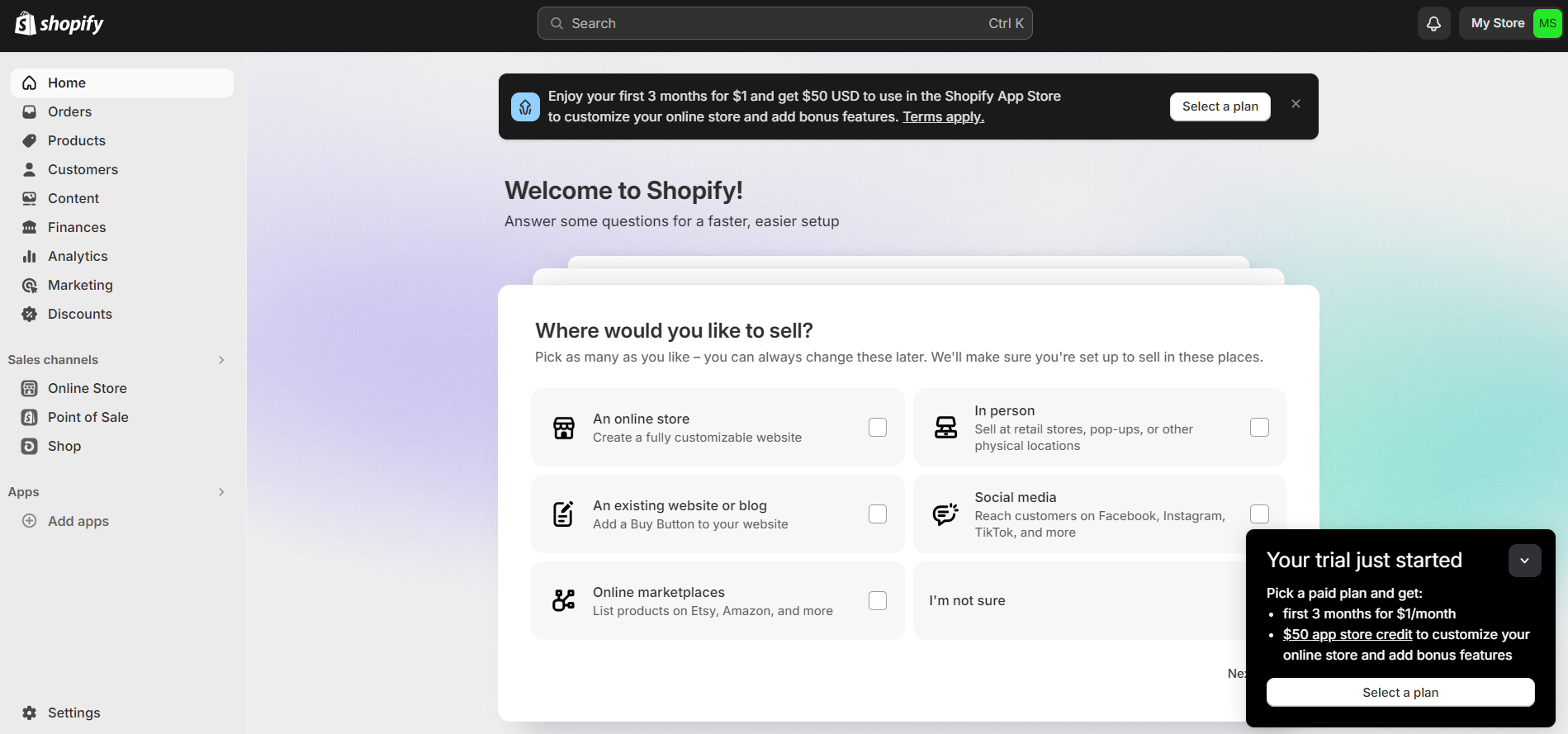
In this case, if you want to have a second Shopify store, you’ll need to create another Shopify account (and buy a subscription plan for it, of course). This way, you’ll have to manage separate accounts along with each plan you bought. If you are struggling to set up a new Shopify store, check out this article for a detailed Shopify tutorial.
2. Multiple Shopify stores with Shopify Plus
If you prefer to manage multiple stores on the same account, you should upgrade your plan to Shopify Plus. At the cost of $2300 upwards per month, this plan is tailored towards high-volume businesses and allows merchants to open up to 10 Shopify sites.
With Shopify Plus, adding a Shopify expansion store is much easier. However, you must pay an extra $250 for each additional one.
Here’s how you create Shopify Plus multisite on the Shopify Plus plan.
- Log in to your Shopify Plus account > Store > Create a Store.
- Fill in the basic information for your store in the store details section.
- Then, select preferred Shopify apps to pre-install on your new Shopify store. Skip this step if you want to spend more time choosing the apps.
- Next, it’s time to import themes to your store. If you don’t want to import files, remember to uncheck the box Import all files from this store.
- Go to Themes > Import Themes.
- Pick the themes you want to upload. Or else, you can select a new theme in the Choose a theme to publish in your new store list.
- Click Done.
- Hereafter, you need to import the staff of the store.
- From the Users section, click on Import Users.
- Select the staff you want to import.
- Click Done.
- Afterwards, click Create Store. You can now log in to your new store and add the necessary details.
Multiple Shopify Stores: What to Know About?
To properly manage multiple Shopify stores, it’s crucial to know inside and out of it. In the following lines, you’ll get to know all the basics of Shopify multiple stores.
What are Shopify multiple stores?
Multiple Shopify stores refer to a scenario where businesses manage more than one distinct online store using the Shopify platform. Of that, each store operates independently with unique branding, settings, and products. This allows merchants to target different markets efficiently or provide a wide product range.
How many stores can you have on Shopify?
Actually, there’s no limit to the number of Shopify stores one can own. You can open multiple shops on Shopify by creating several Shopify accounts with the same email address. It’s also possible to possess a range of stores on a single Shopify account, each with its own storefront and URL, utilizing Shopify Plus. So, if you ever wonder, “Can I have multiple Shopify stores on one account?”, the short answer is Yes. You just need to pick the right Shopify pricing plans.
How much does it cost to have multiple stores on Shopify?
The cost to run multiple stores on Shopify isn’t a fixed number: it’s the total expenses spent on all your Shopify sites. Each store requires different things, such as a subscription plan, themes, extensions, marketing and transaction fees, etc.
However, if you just want to have an idea of how much Shopify multisite can cost, we can give you a baseline based on the cost of Shopify subscription plans.
As of this writing, there are five Shopify pricing plans: Start, Basic, Shopify, Advanced, and Shopify Plus.
The first four plans can be tried out for free within 3 days. After that, Shopify allows you to extend the trial period for one more month for only $1. Once you’ve determined which plan suits you best, switching to yearly plans can save up to 25%.
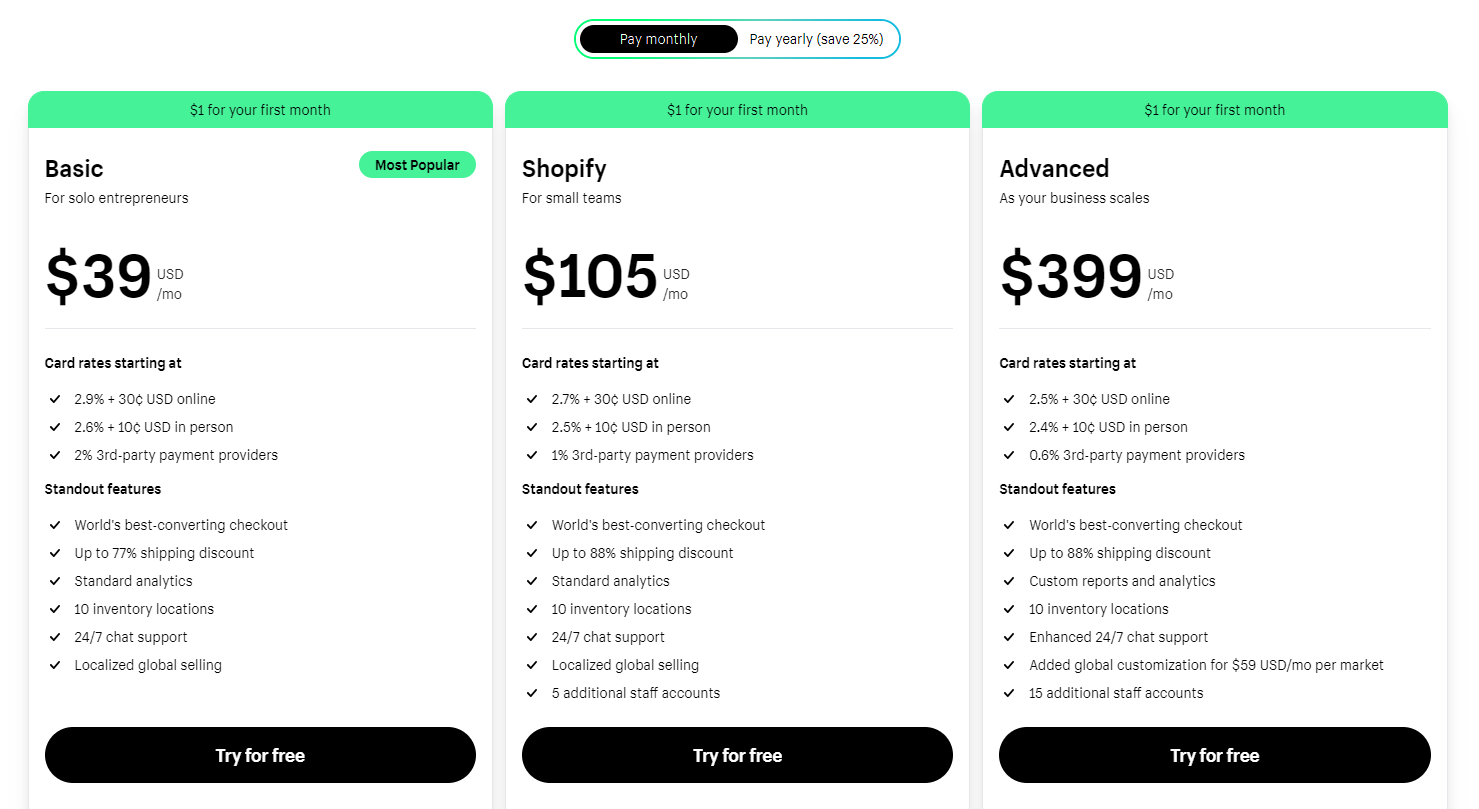
It’s your turn to do the multiplication (and maybe some additions). Say you own two Shopify stores that subscribe to the Basic Plan, monthly billing; it will cost you 39 * 2 = $78 per month. The price may be added as you customize your store and add themes, extensions, etc.
How does multi-store management work on Shopify?
In the realm of eCommerce, multi-store management refers to the practice of overseeing the daily operations of several eCommerce stores within a single business. Oftentimes, running multiple stores also requires you to deal with both national and international delivery options.
When it comes to managing multiple stores on Shopify, there will be two cases:
- Manage multiple Shopify stores from one account: When you log into your Shopify account, you’ll see a dropdown list allowing you to switch between your various storefronts. From there, you can manage each Shopify store individually without the need to log in and out of different accounts.

- Manage multiple Shopify stores from different accounts: In this scenario, each Shopify store requires its own login credentials. Running multiple Shopify accounts also necessitates meticulous attention to ensure efficient management of each Shopify store.
Multiple Shopify stores vs Multiple storefronts vs Multiple Shopify domains: What are the differences?
As you explore options for managing Shopify multiple shops, you might encounter terms like “Shopify multiple storefronts” and “multiple Shopify domains.” Are they the same, or do they represent different concepts? Take a look at the table below for a brief comparison.
[wptb id=71607]
In summary, while all three setups involve operating multiple online stores on the Shopify platform, they differ in terms of backend management, account structure, level of integration, and autonomy. The choice between multiple Shopify stores, multiple storefronts, or multiple Shopify domains depends on your unique requirements, such as centralized or scalability.
Multiple Shopify Stores: Opportunities & Challenges
Now that we know the essentials of multiple Shopify stores and differentiate between confusing definitions. It’s time to learn the strengths and shortcomings of owning multiple Shopify sites before taking the plunge.
Why run multiple Shopify stores?
1. Selling Internationally
In light of the development of global logistics, there is no more formidable barrier to selling across the globe except for languages and currencies. Having a separate Shopify store for each country, therefore, allows you to easily tailor your website to satisfy habits, attitudes, and cultural differences among different countries.
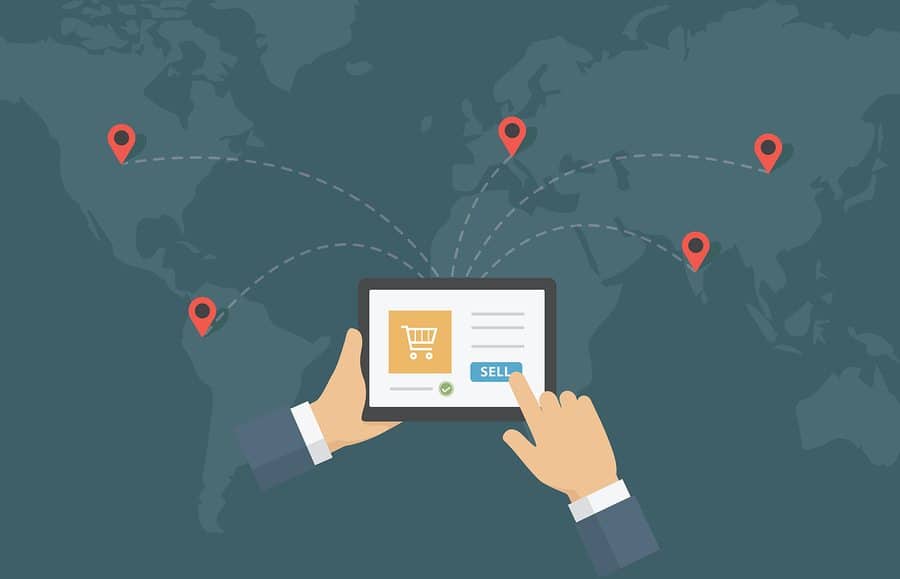
For example, from a Shopify account, it is possible to create one shoe store in India that has a design that looks different from the store in the UK. The prices are displayed in your customer’s native currency.
2. Creating New Campaigns and Managing Them on One Hand
When you want to launch some new products, or new collections, you can test the result before burning money for large promotion campaigns. Either, you might want to offer a generous discount specifically on some obsolete products to free your warehouse.
However, launching highly discounted rates on your main website may devalue your brand in the eyes of your target audience, especially in the field of high-end clothing brands. In that case, it’s best to open a separate outlet store where you offer your products at significantly reduced prices.
You could have two different-priced items, one high and one low. A fancy store can engage different types of customers, but a middle-class customer cannot patiently scroll to the end to find a product at the right price for them. Having another store to sell the lower-priced products can centralize the promotion campaign by narrowing down your target audience.
3. Diversifying Niches and Target Customers
Another benefit of multiple Shopify stores is that merchants can expand their stores to other niches for different customer groups. They can use different sites for each group they want to appeal to.
Challenges when managing multiple stores on Shopify
While setting up extra store instances on Shopify can be very simple (we will guide you step by step in the next section), the actual management of these multiple stores can get a rise out of us. With separate stores, merchants have separate orders, items, and inventory data to worry about. Consequently, you have to face a range of problems:
- Orders: You will have to manage orders on each Shopify store. Fulfillment and the return process can become extremely complicated.
- Inventory: If you sell some products on both sites, you will have to update inventory as customers buy and return items to both sites.
- Products: In case you add new products regularly to your catalog or classify products into seasonal collections, and price ranges, it is not easy as a pie to do so over several different stores.
- Integration: When it comes to operating many branches, it will take a significant effort to integrate the other systems you use, such as ERP or POS, with each store you create.
Tips to Effectively Manage Multiple Shopify Stores
1. Optimize each site specifically
As mentioned above, multiple Shopify stores represent different niches and target customer groups, so the product data and design look should reflect those differences. Accordingly, you need to optimize each store individually to make its content and offers relevant to the intended audiences.
A/B testing is always a recommended toolkit for testing different site designs, promoting country-specific offers, URL structure, and locally relevant content to see the effectiveness and conversion rate of a new site.
2. Centralize order management
Fulfilling orders from separate sites is one of the challenges of operating multiple stores. By centralizing where you fulfill orders, you can easily manage orders across all of your sites.
You can choose an integration platform to push all order data, including fulfillment, returns, customer care, and dropshipping processes, to a centralized system in order to manage and keep track of orders on all online sites seamlessly. To find out a robust order management tool, here is what you should look for:
- Inventory syncing on a regular basis;
- Automation rules for distributing inventory across different stores and sales channels;
- The ability to arrange orders automatically and distribute them to fulfillment commands;
- Order fulfillment from one or multiple commands and syncing to the main source.
3. Master product data in a PIM
Running multiple stores is considered a complicated and time-consuming task because product information management seems messy and inaccurate. That’s why we need a product information management (PIM) system to avoid this struggle by centralizing all your product data, standardizing all your data, cleaning and updating regularly on all stores.
4. Update inventory in real time
There is a risk when the same products on a different storefront are overselling, which drives you to the hassle of telling customers. It means you can’t ship a favorite product to your customer. Therefore, your inventory should update in real time when you are selling through multiple customer touchpoints.
The best way to get real-time inventory is to centralize where you manage inventory. In this way, you can track inventory counts no matter which stores it has been sold from.
5. Analyze multiple shopify stores
Another essential tip for managing multiple Shopify stores is analyzing business data such as conversion rate (CR), average order value (AOV), bound rate, audiences, and new niches. Google Analytics and other similar tools can help you determine which groups of people make up your core audience.
Consequently, you can create the best version of your stores and then optimize your promotion campaigns specified for each niche.
6. Best apps to manage multiple Shopify stores
#1. LitCommerce
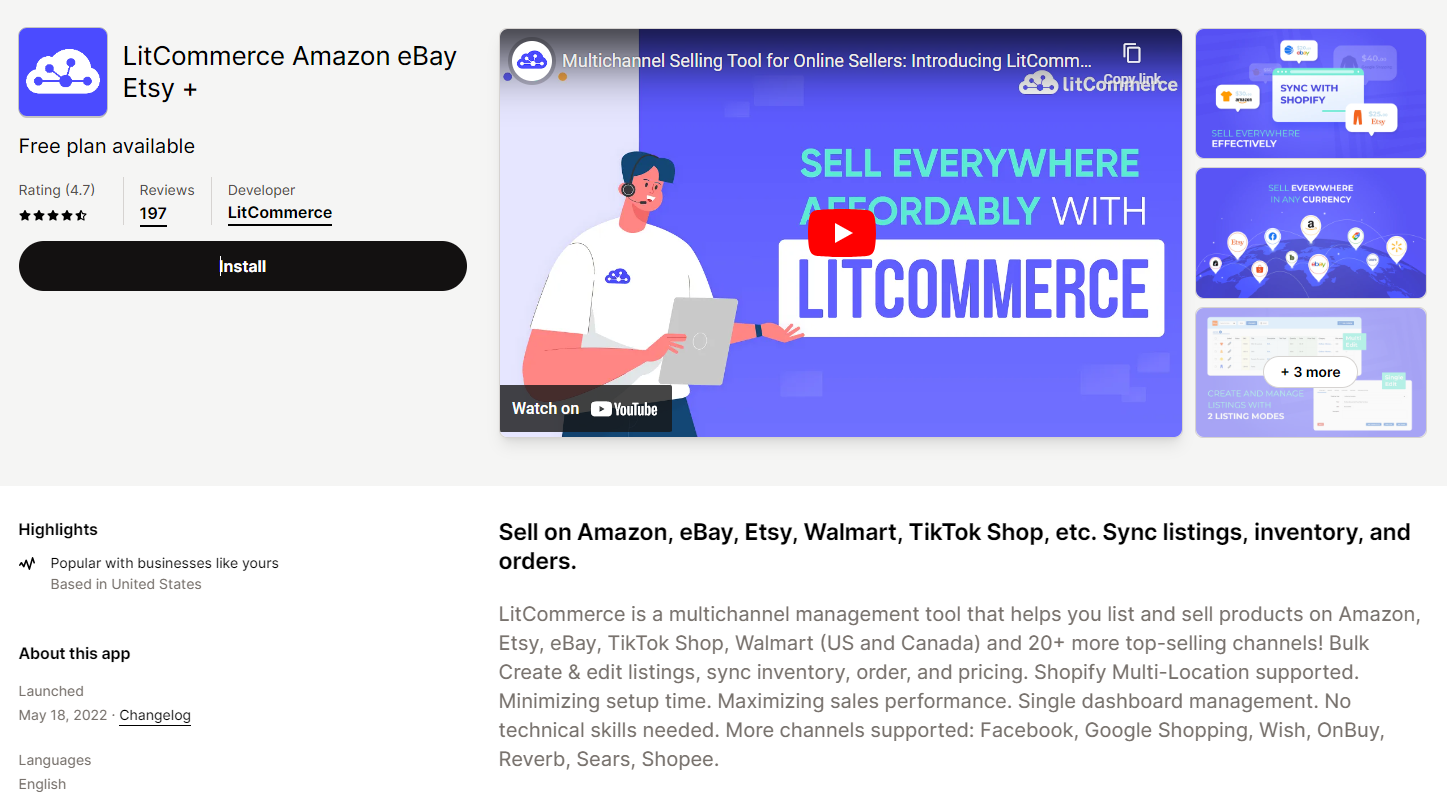
As a reputed multichannel selling tool, LitCommerce allows you to sell in multiple stores on multiple channels effortlessly. You don’t need to navigate through different systems; this tool allows you to manage listings, inventory, and order status in a single dashboard – your main store.
Adding to that, LitCommerce simplifies your workflow through automation. Prices, inventory, orders, etc., will be near-instant sync across multiple stores. By that, you can manage and process orders effectively in one place.
Over and above, this multichannel selling tool provides a detailed sales report so that you will always be updated on your revenue. LitCommerce also integrates with the top 20+ marketplaces, such as TikTok Shop, Amazon, eBay, Walmart, etc. What’s best, this tool offers a forever-free plan besides reasonable pricing options.
#2. Extensiv Order Management
When it comes to operating several stores, connecting and importing orders from all sales channels and synchronizing inventory across stores, warehouses, 3PLs, and distribution centers are crucial. With Entensiv Order Management, you can automate rate-shopping, order splitting and routing, and stock reordering. Thus, it helps you prevent overselling, unpleasant experiences, and market suspension.
This app also helps you estimate seasonal trends, allowing you to stay on top of inventory. This will ensure that you always have enough stock to meet demand. Besides, this software integrates with many marketplaces, such as eBay, Amazon, and Walmart, as well as a number of shipping providers, including DHL, FedEx, and UPS.

#3. Veeqo
Veeqo is an omnichannel retail platform that helps eCommerce Entrepreneurs manage multichannel inventory, orders, and shipping by syncing all their orders across sales channels in real time.
It allows merchants to automate their shipping processes and analyze their business performance easily. The software integrates with several marketplaces, shipping solutions, 3PLs, POS systems, accounting, helpdesk solutions and marketing tools as well.
#4. Rewind backups
Rewind Backups app helps you secure all your data by automating backups of your Shopify stores and undoing unwanted changes easily. This automatic backup is extremely helpful if you run multiple Shopify stores.
Rewind Backups can back up every type of data connected to your store, including products and product images; customers and inventory; orders and collections; pages, blogs, and blog posts; themes and theme files; store policies; locations; shipping zones; menu navigation; saved searches; and gift cards. All of them are encrypted. Then you can choose an individual item or a group of items to restore in minutes.
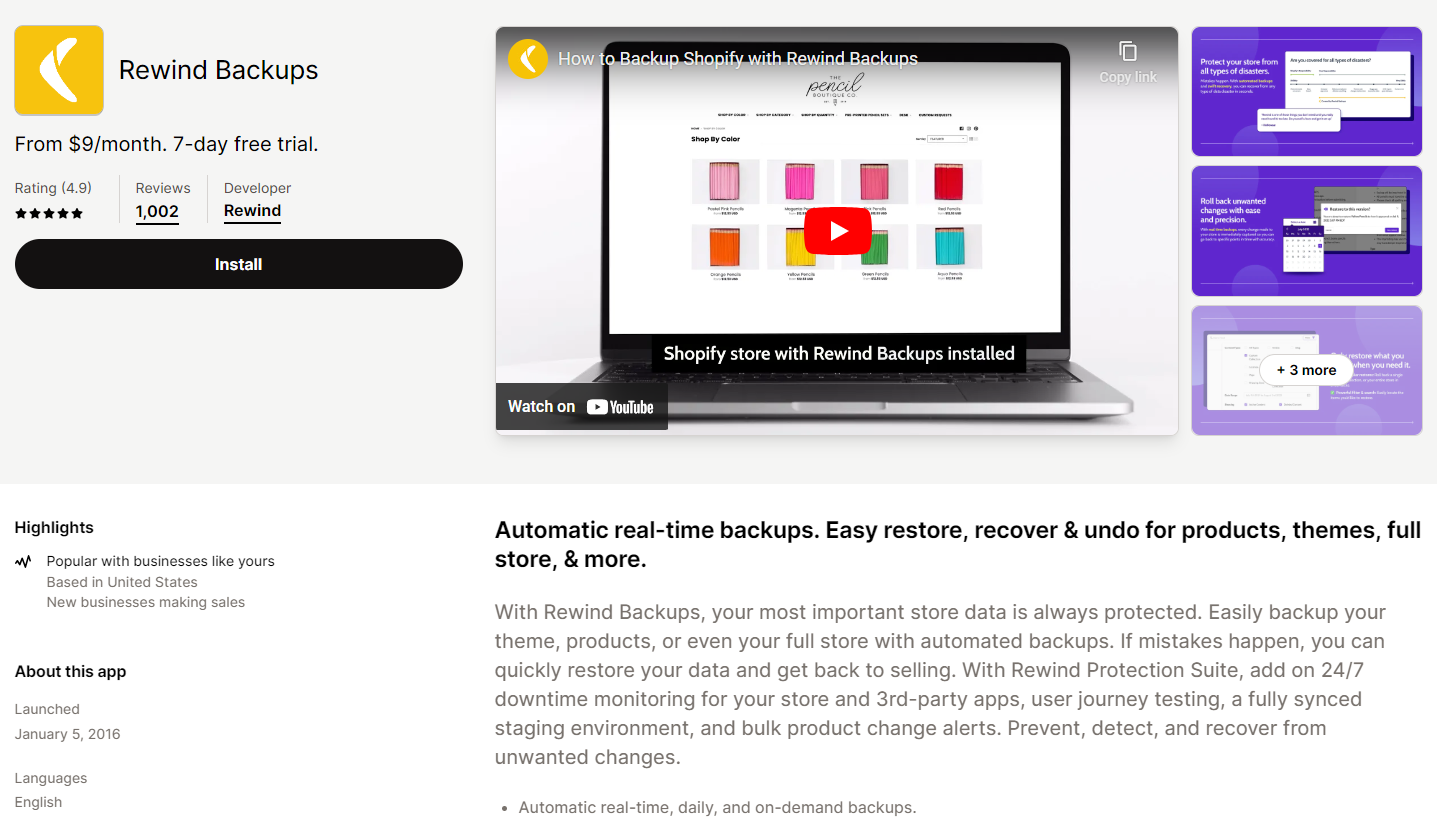
#5. Shogun
Shogun is a large library of web-building elements with a drag-and-drop interface to quickly create their own custom landing pages, product pages and blog posts. It also has a Sync feature that’s quite useful for multiple stores. With Sync, you can copy a page from one store to another with just one click.

#6. Last pass
Being an administrator of several store branches means managing many accounts. Remembering all of those passwords can be tough and inaccurate. Therefore, we recommend a tool named Last Pass to manage your Shopify login credentials and secure the storage of identities.
This software can save sites as you log in, import sites from your email, and import or upload from other password-management software. There is also a free plan and a Chrome extension if you use Chrome as your browser.
Shopify Multiple Stores: FAQs
[sp_easyaccordion id=”48502″]
Final Words
In a nutshell, multiple Shopify stores can bring you several benefits, provided that you have a suitable business plan and adopt the best practices we’ve suggested above. You can choose to manage separate stores from different Shopify plans or to purchase several stores from a Shopify Plus account. If you’re not ready to commit, try out Shopify’s 3-day free trial to see how things work first.
To get more helpful updates around eCommerce reviews, platform migration guides, or helpful toolkits, let’s discover LitExtension Blog. Join our Facebook Community to get more eCommerce tips and news.
Happy selling!